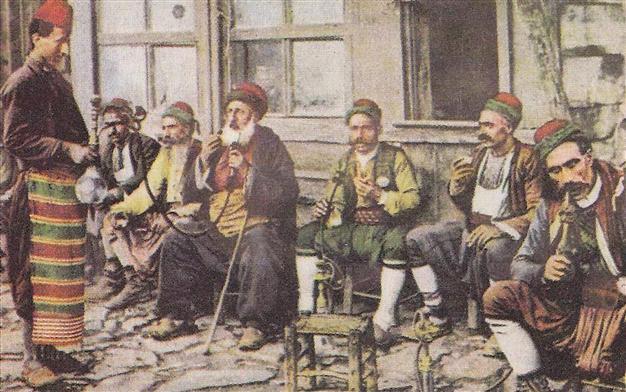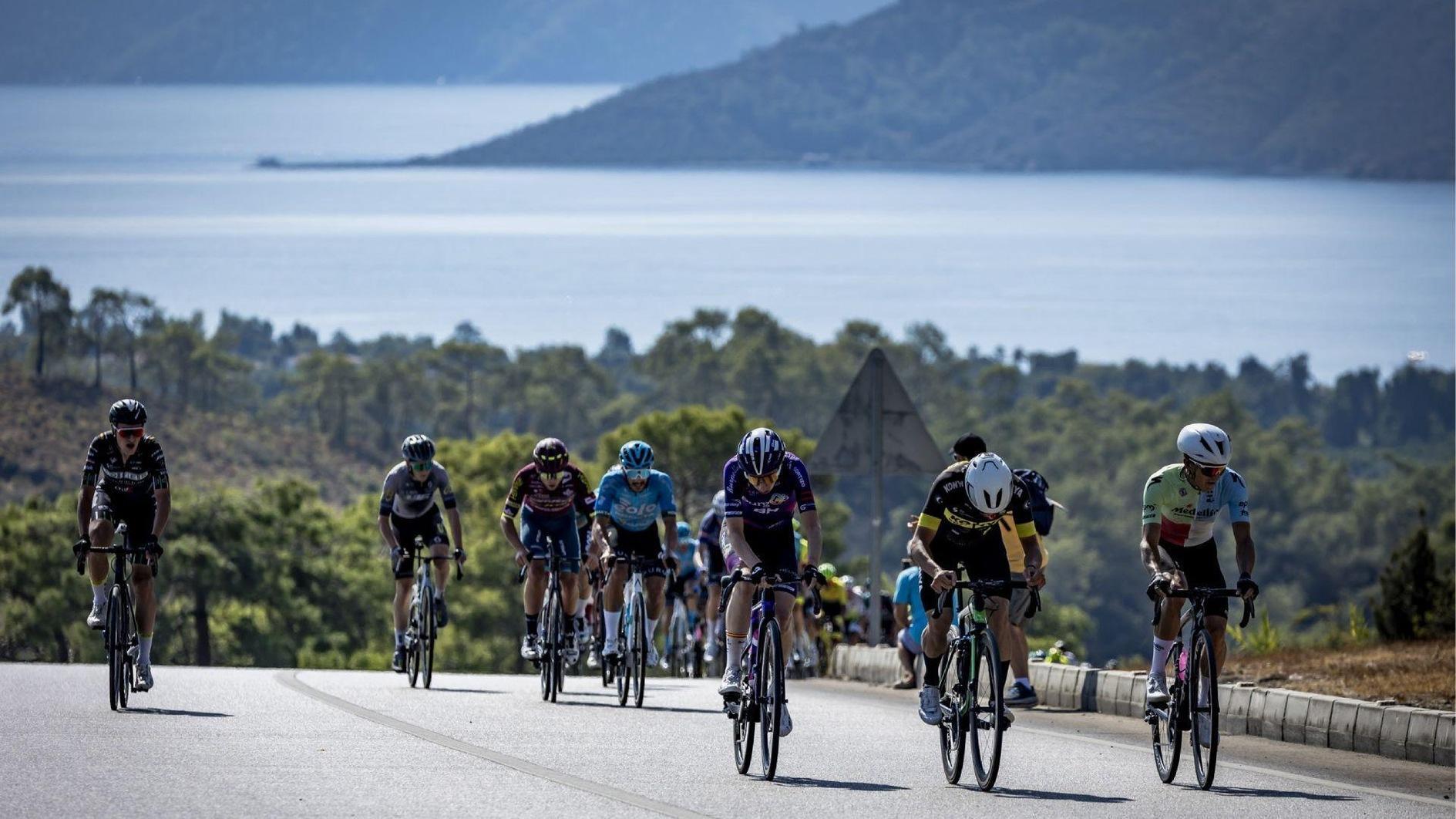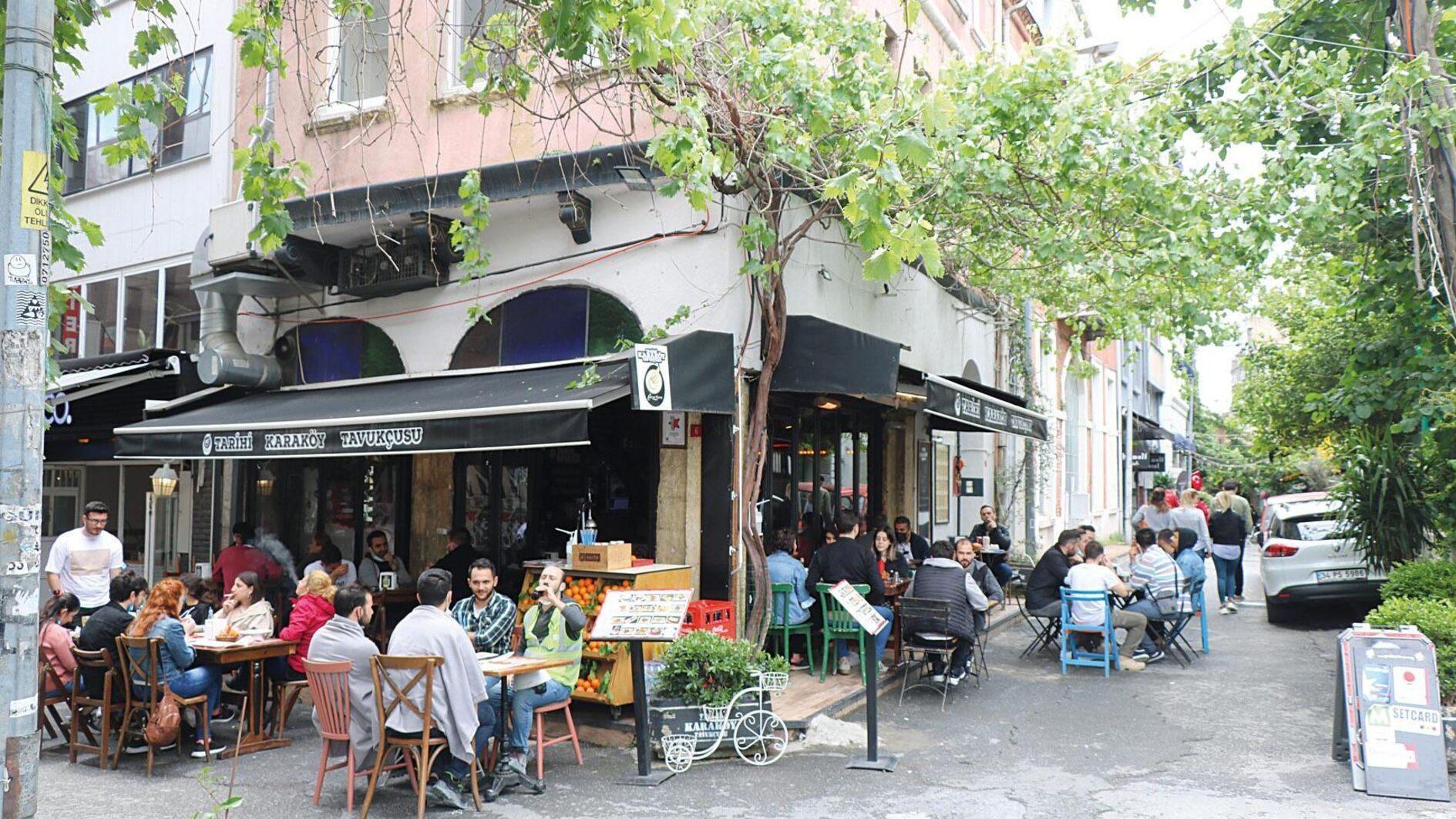Hitting a high the Ottoman way with tobacco
Niki Gamm

Coffeehouses were a key part of Ottoman social life, despite official disapproval.

Concubine with nargile. Vittorio Rappini.
The nargile (known as the water pipe, hookah, hubbly bubbly, shisha and by other names) is said to have originated in the Persian Empire and then came to the Ottomans during the reign of Yavuz Sultan Selim (r. 1512-1520). The Persians are supposed to have gotten the nargile from India where the word nargile means coconut. It seems likely that the tobacco they used though was not the kind that subsequently gained in popularity and that we are more familiar with.
This earlier date is collaborated by a story told about Mimar Sinan at the completion of Süleymaniye Mosque in 1558. Rumor came to Sultan Süleyman’s ear that his architect was smoking a nargile in the middle of the main mosque hall. The sultan became angry when he found Mimar Sinan there apparently smoking tobacco. The architect was, however, just blowing on the nargile to listen to the sound the bubbles made to test the structure’s acoustics.
According to Refik Ahmet Sevengil, tobacco was first brought to Istanbul in 1600, but he doesn’t say whether the tobacco came from Iran or from Europe. However, it didn’t catch on at first; that didn’t happen until 1636, although he gives no reason for such a specific date. On the other hand, though it seems rather unlikely, Balıkhane Nazırı Alı Rıza Bey states in his work, “Bir Zamanlar Istanbul,” that tobacco came in 1687 and was first used for medicine, becoming popular only in 1735.
Smoking and coffeehouse culture

A 19th century coffeehouse. Amadeo Preziosi.
Istanbul’s Tıryaki Çarşısı (Addict Market), well-known for its coffeehouses, was a single line of stores that was built as part of the Süleymaniye Complex and stretched below two madrassahs. Some of the stores sold folding lanterns made of oil cloth, useful for keeping in one’s pocket in case of being caught outside on a dark night before the days of electricity, while other shops sold pen cases. It was also the site of the Slave Market. And then there were the coffeehouses where the men of Istanbul gathered to while away the time chatting, playing games such as chess, drinking coffee and relaxing over a nargile. Coffee cups would be lined up around the fireplace while wooden pipes and nargiles were to be found in the corners.
In 1623, Murat IV decreed that coffeehouses be closed and it was forbidden to drink coffee and wine or use tobacco and opium. The sultan not only ordered his imperial guard corps to patrol the various districts, but he himself also prowled the streets, ordering the immediate execution of anyone he caught. Out of fear that the smoke would be seen and reported, addicts would take the leaves and pound them into small pieces, inhaling the dust, that is, snuff.
Following the death of Murat IV in 1639, the law was changed and coffeehouses were once again allowed in Istanbul. In 1640, a Jew opened a snuff shop in Galata for the first time. In spite of the prohibition – Murat IV wasn’t the only sultan to issue a decree against tobacco – the sultans couldn’t really make their decrees effective; they simply drove it underground. Members of the palace and in particular the imperial dynasty smoked pipes and the nargile. And as tobacco was heavily taxed, prohibiting its use meant lost revenue. In any case the prohibition never seems to have been applied outside of Istanbul so coffeehouses in places like Bursa flourished.
Ali Rıza Bey describes addicts as follows: “Those whose nature was inclined to addiction counted coffee, tobacco, tömbeki [a tobacco especially prepared for the nargile that originally came from Iran] and snuff as giving a light high. Most of those who used snuff habitually were leading high-level intellectuals, sheykhs, property owners, writers and more serious people like these. Among these there would be lengthy conversations about the type of snuff and its excellence… When snuff addicts met on the street, they would immediately offer their snuff case and they called this ‘sidewalk party.’” One such discussion centered around whether to add rose water or sea water to the tobacco.

Women resting under the trees. Jean Brindesi.
Those who became addicted to opium, a paste that was supposed to have been good for hemorrhoids and chest illnesses, had been addicted to wine when they were young and later switched to opium. For those who used opium secretly, they would always drink coffee after they’d used it and they would always carry the drug with them in a box.
The addicts would spend their entire days in known coffeehouses which were near Tahtakale, Tophane, Silivrikapı, Mevlevihane Kapı and on a road leading to İshakpaşa, according to Ali Rıza Bey. He also points out that these places didn’t resemble the usual coffeehouse but were filthy, with blackened ceilings, covered in cobwebs, falling plaster, glass that had never been cleaned, dark and filled with disgusting smells.
In spite of the occasional prohibitions that often originated in religious circles, observance of the holy month of Ramadan doesn’t seem to have mattered. As soon as one had broken the fast in the evening, the pipes and nargiles would come out among the women as well as the men. In fact a number of paintings by Orientalist artists show both sexes smoking. Coffeehouses were equally welcoming for the late night crowd during Ramadan.
















